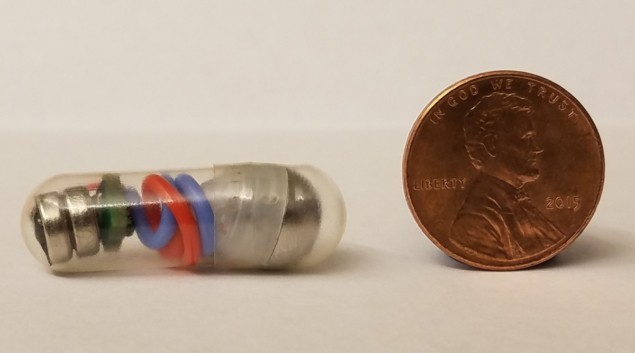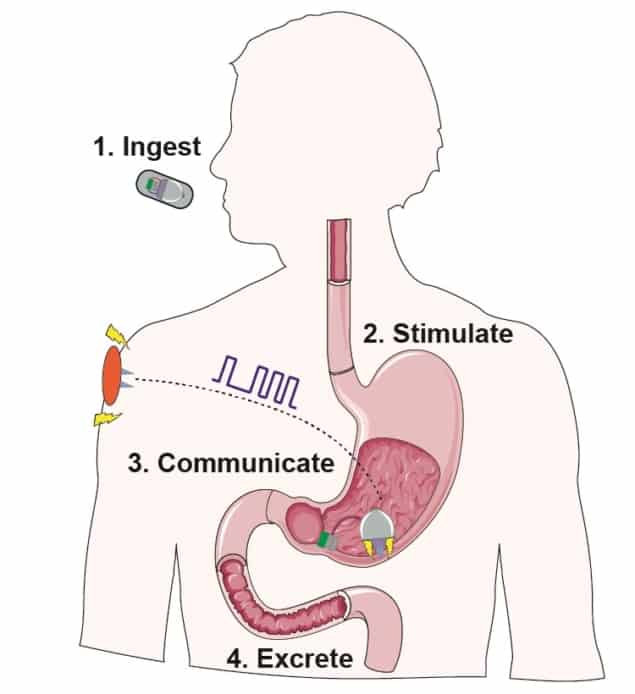
Researchers in the US, Denmark and Sweden have designed a novel microstimulation device that can attach to the gastrointestinal (GI) tract and electrically stimulate the stomach muscles to induce contractions. The new device, described in Science Advances, aims to treat disorders such as gastroparesis, which prevents the stomach from properly emptying.
Decades of scientific and medical research has shown that, due to the presence of neural circuits in the GI tract, electrical impulses that stimulate nerves and muscles can improve the health and quality-of-life of patients with GI-related disorders. For instance, to treat gastroparesis, the common approach has been surgical implantation of gastric pacemakers that stimulate the outer muscular layer of the stomach.
To reduce cost barriers and address safety concerns associated with surgical implantations, recent developments in orally administered therapies and ingestible robotic systems could prove of paramount importance. Yet currently available robotic sensors cannot provide electrical microstimulation in a controlled manner. Therefore, there is a clear need for oral electrical stimulation systems that can be employed on an as-needed basis.

To overcome issues related to sensor control, management and communication, Alex Abramson and colleagues at Massachusetts Institute of Technology, in collaboration with researchers at Novo Nordisk and KTH Royal Institute of Technology, have developed an orally administered electrical stimulation device.
The design of the new device was inspired by the way that a parasitic worm, the Taenia solium tapeworm, uses hooks to attach to the GI tract of its host. Between five and 15 minutes after the device is ingested, it autonomously aligns itself with the curved stomach lining and uses a compressed spring to insert tiny hooked stainless steel needles into the stomach muscle wall. The needles act as probes to provide timed electrical pulses, thereby improving the device’s controllability.

The electrical pulses can conductively signal the probe’s anchoring and detachment events and thus allow the device to communicate its position. Abramson and the team tested the new sensor in ex vivo human stomach tissues and in vivo in pig stomachs. In sedated pigs, the device remained in place for up to two hours after being swallowed and repositioning itself along the stomach lining. Whilst in place, the device induced timed muscle contractions across the tissue.
The researchers also applied the device in awake pigs. The devices were orally ingested by pigs with empty stomachs, and then – as designed – the sensors naturally detached after the pigs ate and digested their food. In the absence of digestion, by localizing to a single spot on the tissue, the device can perform electrical microstimulations for an extended period of time.
“The STIMS [self-orienting technology for injection and electrical micro-stimulation] capacity for tissue wall anchoring and signalling could enable new applications for ingestible devices that focus on the tissue rather than the ambient environment,” the authors write.



